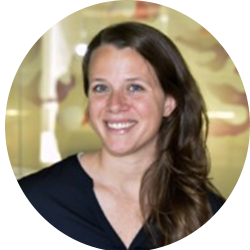About the Research
The scientific focus of our research is largely driven by a single concept: Perception is a construct. Each time we experience a sensory stimulus, we are creating something in our brain. The sensory stimulus itself does not transmit through our nervous system. Instead, we are creating a representation of that sensory signal that ultimately becomes a conscious percept. Put simply, you may touch with your hand, but you feel with your brain. We are interested in this fundamental process that links sensation to perception in an ever-changing neural environment. The internal representation of the outside world is built on patterns of neural activity, commonly referred to as the ‘neural code’. While we often model the neural code as a linear mapping from stimulus to spikes, it is actually extremely complicated and nonlinear even very early in the sensory pathway. In particular, the neural code explodes in complexity at the thalamocortical circuit where nearly all sensory information travels through the thalamus before reaching cortex. Using a combination of experimental paradigms and computational models, we investigate how somatosensory information is encoded at each stage of the neuraxis from the skin to the cortex with a particular focus on the dynamic role of the thalamus.
Our lab is always interested in training enthusiastic and motivated students (Honours and PhD) in our highly interdisciplinary group.
About the Group Leader
Dr. Whitmire is a group leader at the Queensland Brain Institute (QBI) and a senior lecturer in Electrical Engineering and Computer Science (EECS) at The University of Queensland (UQ). She is a leading expert in understanding how sensory information is represented along the neuraxis from the neurons in the skin that sense external stimuli to the central representation in the thalamocortical circuit. She operates at the interface of neuroscience and engineering to generate novel insights into information representation in the brain. Her laboratory uses a combination of tools to record from populations of neurons, manipulate the activity of those neurons, and model the underlying neural circuitry. Dr. Whitmire trained as a Biomedical Engineer at North Carolina State University (B. S.) and Georgia Institute of Technology/Emory Universty (Ph.D.). Following postdoctoral work at the Max Delbrück Center for Molecular Medicine, she established her own laboratory at The University of Queensland in 2023.
Group leader
Dr Clarissa Whitmire
@WhitmireCJ
LinkedIn profile
clarissawhitmire.com
c.whitmire@uq.edu.au
UQ Researcher Profile

